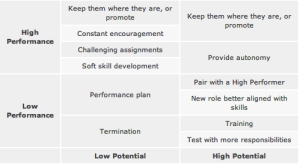
Starting a business can be an exhilarating adventure into entrepreneurship, where every step brings you closer to realizing your goal. But it can also present many obstacles along its journey. Thus, I have partnered with Grant Polachek from Squadhelp to publish a guest post here. He has put together an invaluable step-by-step guide on launching your venture. Let’s work on your entrepreneurial adventure together.
Your First Step
The initial step to succeed as an entrepreneur should be discovering your entrepreneurial passions. Unleash what truly excites you and build your business around that interest – passion drives success in business ventures!
1. From Idea Sparks to Business Plans: Turning your ideas into actionable business plans is vital. Here is how you can outline your concept, set goals, and develop a roadmap for the future.
2. Market Research Magic: Successful market research is crucial to understanding your target audience, competition, and industry trends. Let’s discuss how to conduct compelling research studies that provide vital insights that help shape business concepts.
Establish the Foundation
1. Naming Your Business: Naming is more than a formality–it is integral to creating your brand identity! Our experts will walk you through the steps for selecting an exciting and memorable name that embodies all that your business stands for.
2. Discover Your Funding Options: Examine various funding strategies available, from bootstrapping and seeking investors or loans to creating a solid financial plan to meet your business goals.
3. Navigating Legal Waters: Navigating legal waters as part of business ownership can be complex. We will discuss the structures, permits, and licenses necessary for your operation to run efficiently within the law.
Establish an Online Presence Today
Having an online presence is imperative. Understand why and learn how to develop one through creating professional websites and compelling brands online, with the assistance of platforms like Squadhelp to optimize your brand’s impact and recognition.
1. Networking for Success: Building and cultivating connections are crucial assets to any entrepreneur, and here we’ll cover strategies for effective networking and relationship-building that can help make your business thrive.
2. Crafting Your Business Story: Every successful business needs an engaging storyline. Discover how you can craft and tell it effectively so that it connects with audiences on an intimate level.
Testing and Launch
1. Prototyping: Before officially releasing your product or service, prototyping provides the ideal way to test it and collect feedback before its full rollout. Let’s discuss its importance and how best it can benefit you!
2. Learn the MVP Approach: Applying the Minimum Viable Product (MVP) approach quickly and efficiently will enable your business to launch rapidly while gathering early insights to refine its offering further.
Marketing and Growth
Determine and develop innovative marketing strategies tailored specifically for startups, including content marketing, social media strategies, and guerrilla tactics designed to gain visibility and attract customers.
1. Scaling Your Adventure: Expanding and growing your business is exciting, so you need to focus on strategies for expanding operations, expanding markets, and broadening customer bases.
2. Survival Skills: For Startups Business competition can be tricky. Mastering essential survival strategies to navigate challenges effectively and pivot when needed to guarantee the long-term success is cruicial for the business. So, define your strategies accordingly.
Resources and Support
Discover invaluable business support organizations such as incubators, accelerators, and business support organizations that offer guidance, mentorship, and funding opportunities for your start-up venture.
1. Explore Technology: Discover essential tools and technologies to streamline business operations, manage finances effectively, and increase productivity.
2. Entrepreneurial Learning: Being an entrepreneur requires continuous education. So, keep yourself up-to-date by reading latest books, learning from new courses, and using new platforms to keep up-to-date and continuously hone your entrepreneurial abilities.
Conclusion
Your business journey can be an adventure of opportunities, challenges, and growth. By following this step-by-step guide as your compass, you are well-equipped to navigate the entrepreneurial terrain successfully. Remember that every setback is an important stepping stone, while every triumph proves your hard work and vision.
As you embark on this exciting venture, remain true to yourself, adapt quickly to changing circumstances, and never cease learning. Your entrepreneurial spirit and determination are at the core of its success; keep those qualities close as you pursue this exciting venture!
Your entrepreneurial adventure begins with you; its possibilities are limitless! Seize every opportunity, face every challenge with courage, and watch as your entrepreneurial dreams take from – good luck on your path to entrepreneurship success!

 By being funny, I don’t mean that you need to be a superstar at the break room discussions. What I mean is……..you need to have a humorous side of you to laugh on your mistakes.
By being funny, I don’t mean that you need to be a superstar at the break room discussions. What I mean is……..you need to have a humorous side of you to laugh on your mistakes. If you want to become the best leader in the world, then you need to surround yourself with genius employees. Look at Steve Jobs, Bill Gates, etc. They have always surrounded themselves with cream employees.
If you want to become the best leader in the world, then you need to surround yourself with genius employees. Look at Steve Jobs, Bill Gates, etc. They have always surrounded themselves with cream employees.


 In my last blog, I have discussed about how you can save some money and re-training costs by hiring a fresh graduate instead of an experienced professional. In this blog, I will provide you with few other reasons why you should prefer fresh graduates over an experienced person.
In my last blog, I have discussed about how you can save some money and re-training costs by hiring a fresh graduate instead of an experienced professional. In this blog, I will provide you with few other reasons why you should prefer fresh graduates over an experienced person. Give one more chance: Imagine….if you were the employee, who is on the line and about to get fired. Obviously, you don’t want to be in the situation where you think that you are a peek performer and your manager hands you a memo saying… “You are fired”. Thus, I always recommend managers to treat their employees as they would like to be treated. Hence, make sure to give your employee the last fair chance to improve his performance. Don’t just have verbal talks with him, make sure to document this and forward it to HR to put on his file. This will provide your employees with one last chance of improving their performance, while it will provide you with a supporting document, if you ever get prosecuted.
Give one more chance: Imagine….if you were the employee, who is on the line and about to get fired. Obviously, you don’t want to be in the situation where you think that you are a peek performer and your manager hands you a memo saying… “You are fired”. Thus, I always recommend managers to treat their employees as they would like to be treated. Hence, make sure to give your employee the last fair chance to improve his performance. Don’t just have verbal talks with him, make sure to document this and forward it to HR to put on his file. This will provide your employees with one last chance of improving their performance, while it will provide you with a supporting document, if you ever get prosecuted. Work by the book: Before you take any drastic steps like this, make sure to read all the HR specific and company specific guidelines. If I were you, I would talk to my HR business partner or company’s attorney before even thinking about this. And before even talking to your HR personnel, I would recommend you to prepare a file which should contain all the documentations showing that you have had communications with your employees regarding this problem (i.e. e-mails, memo, etc.). When you have this discussion with your HR personnel, don’t forget to talk about all the minute details of your employees like his race, gender, recent leaves, etc. I have seen various situations, where employees have sued their employer for firing decision on the basis of their race or gender, and the firing decision didn’t have anything to do with that. Thus, it is better to disclose all the facts with your company’s attorney beforehand.
Work by the book: Before you take any drastic steps like this, make sure to read all the HR specific and company specific guidelines. If I were you, I would talk to my HR business partner or company’s attorney before even thinking about this. And before even talking to your HR personnel, I would recommend you to prepare a file which should contain all the documentations showing that you have had communications with your employees regarding this problem (i.e. e-mails, memo, etc.). When you have this discussion with your HR personnel, don’t forget to talk about all the minute details of your employees like his race, gender, recent leaves, etc. I have seen various situations, where employees have sued their employer for firing decision on the basis of their race or gender, and the firing decision didn’t have anything to do with that. Thus, it is better to disclose all the facts with your company’s attorney beforehand. Have a crime buddy: By ‘crime buddy’ I meant to say, someone who knows the same information as you. In most of the situations, I would recommend you to include your immediate manager or the HR business partner. This practice will make sure that someone will back you up, if there are any legal proceedings in the future. Most of the managers know this fact, but don’t know how to implement this. Here is one tip….have a lunch with your immediate manager, discuss about this issue during the lunch, and then forward all the current documentation to him/her. This will ensure that you are not the only person accountable for this decision.
Have a crime buddy: By ‘crime buddy’ I meant to say, someone who knows the same information as you. In most of the situations, I would recommend you to include your immediate manager or the HR business partner. This practice will make sure that someone will back you up, if there are any legal proceedings in the future. Most of the managers know this fact, but don’t know how to implement this. Here is one tip….have a lunch with your immediate manager, discuss about this issue during the lunch, and then forward all the current documentation to him/her. This will ensure that you are not the only person accountable for this decision.

